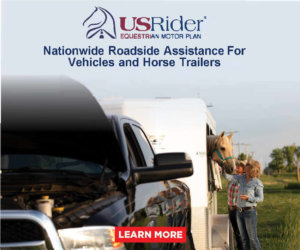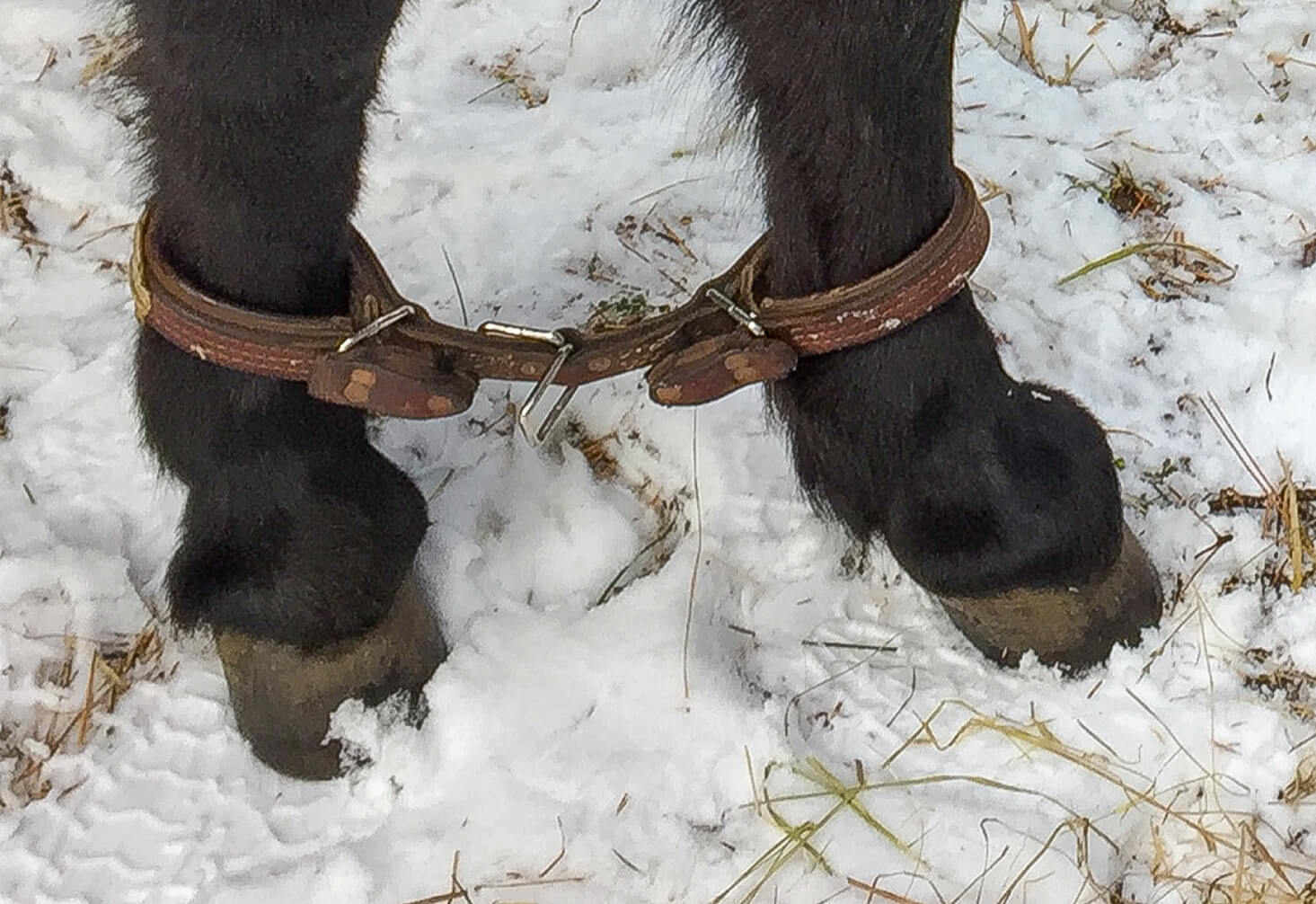Hobbles have an important part to play in our equestrian and trail riding life. From teaching patience to back country grazing, the sooner you can get your horse or mule used to these back country bracelets the better off they’ll be.
Hobbles date back to the ancient Egyptians, who described them in hieroglyphics, and used them to restrain cattle. As a form of physical restraint, hobbles remain valuable thousands of years later.
The primary reason I hobble train all of my animals is to teach them to give to pressure. Hobble training is a tool to help my horses and mules learn to be quiet in uncomfortable situations, such as would occur if a leg were to get caught in wire. An animal that can stand steady and accept pressure without struggle or panic is well worth its place in any string.
I use hobbles mainly in back country camping situations. They allow me to graze my animals in a semi-controlled manner. Being able to let the mules rummage for their own meals allows me to pack less, go further, and stay longer in wilderness areas.
Types of Hobbles
While there are various types of hobbles, the type most used by trail riders and back country explorers tend to be the style that loosely connects the front pasterns together. This type of hobble can be found constructed from many different materials including chain, nylon, and leather. I have a strong preference for the buckle-less version featuring a tab arrangement that opens and closes much quicker than the more common (and clumsy) buckle variants. These tab hobbles help keep me safer by minimizing the time spent around hard and unforgiving hooves.
Hobble Training
All of my animals are introduced to hobbles whether or not they’re destined for the back country. Effective hobble training helps them become better at having things wrapped around their legs without panic. Being steady, calm, and collected during trying times is a tool that every horse needs to have in their saddle bags.
Helping animals tolerate things wrapped around their legs and give to pressure, our hobble training starts without hobbles. I’ll spend as long as it takes, generally at least a week or two, preparing and making sure that they’re comfortable before I move on to the next step of the process.
Step 1: Desensitize the Legs
You should be able to touch and manipulate all four legs easily and without resistance. Spend the time to desensitize the horse with ropes, blankets, flags, anything you can think of to make the horse confident when encountering new objects. I’ve found that the more time I spend conditioning and desensitizing the horse gives me valuable clues into how the horse might react, either negatively or positively, when under pressure.
Step 2: Give to Pressure

I want the horse to give to pressure on his legs rather than struggle. To teach the horse to give, I put a soft rope first on one leg and then another, teaching the horse to cooperate when pressure is applied by lifting his hoof. Once the horse lifts the hoof, relax the pressure. Repeat. The leg is not tied. If the horse gets scared, I can let go of one end of the rope and immediately release him.
I make a game of this step by leading the animal by a foot. Any foot. With a little patience and practice you’ll be able to lead by attaching the rope to any foot. Once I can do that, it’s time to introduce the hobbles.
Step 3: The Hobbles
For our initial introduction to hobbles I’ll find an area with safe footing, arm myself with a flake of prime hay, and wait until dinner time. Once the horse is concentrating on eating, I’ll put the hobbles around their pasterns, give them a few tugs so they know they’re on and wait. I’ve found that most animals are more interested in filling their stomachs than worrying about hobbles.
I see several benefits to this method. One, it helps associate hobbles with pleasant things. Two, with food in the mix the animal will slowly explore the hobbles with small steps that reduce the chances of falling.
For me, this three-step process is safer, and less dramatic for my animals and myself than slapping on hobbles and yelling “whoa” during the subsequent commotion.
I believe that hobble training is a fundamental step in every horse’s education. Whether you venture into the back country or stay closer to home, teaching your animal to give to pressure could save his life. A horse that has been taught to give to pressure can wait for help or think his way out of a situation without panicking.
Take your time with hobble training and you’ll be rewarded with a safer horse and many wonderful experiences on the trail and off.
For more practical information on trail riding and camping with horses, visit us
at www.TrailMeister.com. We’re also the largest guide to horse trails and camps in the world.
See this article in the 2021 April online edition:

Robert Eversole, ”the trail meister,” owns www.TrailMeister.com, the largest database of horse riding and camping areas in the U.S. with free trail and trailhead information, trail maps, and much more to help horse enthusiasts experience the joys of trail riding. Robert is a registered riding instructor with PATH International, a mounted search and rescue team member, and a U.S. Marine who has served on the board of the Backcountry Horsemen of Washington (BCHW). He is enjoying his new career helping fellow trail riders stay found and safe on the trail. When not on the trail, The Trail Meister resides near Spokane, WA and teaches land navigation to a wide variety of outdoor groups across the nation. For North America’s largest horse trail and camping directory, trail tips, and more, visit www.TrailMeister.com.






